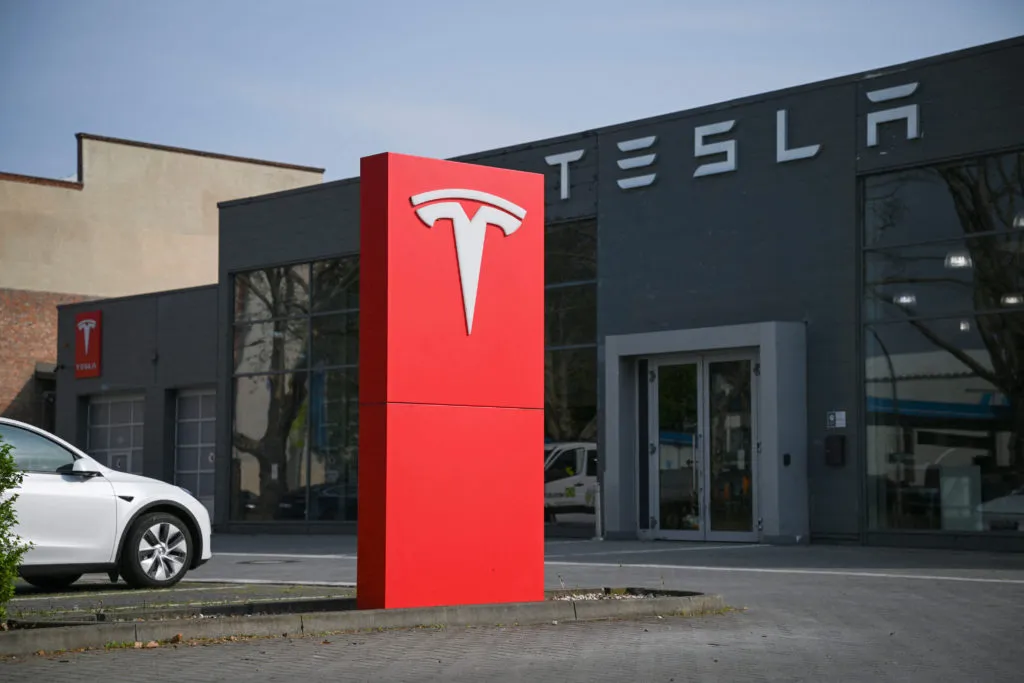Tesla Inc. CEO Elon Musk has cautioned investors about a potentially turbulent period ahead after the electric vehicle company posted one of its most disappointing quarters in recent memory.
During the second quarter, Tesla reported a 12% drop in revenue to $22.5 billion — the steepest year-over-year decline in at least ten years. Adjusted earnings came in at 40 cents per share, slightly below the average analyst projection. The earnings announcement, released Wednesday, didn’t include any major surprises, but the overall tone of the earnings call left many questions unanswered about Tesla’s future.
Although the company remains committed to developing its robotaxi service and a lower-cost vehicle, its post-earnings call with analysts failed to alleviate investor concerns. Musk, uncharacteristically subdued, reiterated plans to expand the robotaxi service into new U.S. cities by the end of the year. However, he warned that the expiration of electric vehicle incentives will pose a significant challenge for Tesla’s core business of car sales.
The revenue decline was driven by a combination of lower vehicle deliveries, reduced revenue from regulatory credits, and a drop in the average selling price of Tesla’s vehicles. Additionally, Tesla’s energy generation and storage business also posted declining sales.
One bright spot was growth in the division that includes the Supercharger network, though even that was overshadowed by Chief Financial Officer Vaibhav Taneja’s warning that President Donald Trump’s tariffs and new U.S. tax legislation could hurt demand moving forward.
Tesla’s stock fell 5.2% in after-hours trading following the conference call. Year-to-date, the stock has declined 18%, though it has recovered somewhat from its March and April lows.
Despite the weak quarterly results, some investors remain focused on Tesla’s long-term vision centered on artificial intelligence, humanoid robots, and full autonomy. Adam Crisafulli, founder of Vital Knowledge, framed the debate clearly: “If one thinks Tesla is at its core just an auto business, then the results were poor. If one thinks Tesla is an AI/robotics juggernaut, then you will probably feel the same about its prospects after the Q2 release as you did before.”
Musk emphasized the importance of autonomous driving and the Optimus robot program during the call. He expressed confidence that, with successful execution in these areas, Tesla could eventually become the most valuable company in the world. Still, he acknowledged the company would face “teething pains” as it ramped up investments in robotics and AI.
Tesla plans to provide more detail on its robot and AI efforts during its upcoming shareholder meeting. Musk also raised a concern about his control over the company, suggesting his stake should be increased to protect against potential efforts by activist investors to remove him.
A Delaware court ruling had previously voided his massive compensation package, and Tesla has since moved its corporate registration from Delaware to Texas in response.
“I think my control over Tesla should be enough to ensure that it goes in a good direction, but not so much control that I can’t be thrown out if I go crazy,” Musk said, addressing ongoing governance debates around his role.
Tesla’s public image has also become more divisive, largely due to Musk’s political affiliations and his brief involvement with the Trump administration. His efforts to reduce government spending drew criticism from some of Tesla’s traditionally liberal customer base and caused concern among investors that his political involvement might distract from the company’s business priorities. As a result, several analysts have recently lowered their outlooks on Tesla’s performance.
The decline in regulatory credit revenue — a once-important profit driver — was particularly notable. That revenue fell over 26% to $439 million in Q2, down from $595 million in the first quarter and $890 million in the same period last year. This source of income is expected to continue shrinking as the Trump administration rolls back penalties for carmakers who fail to meet fuel economy targets.
There was a hint of progress on the affordability front. Tesla announced the first builds of its new, lower-cost model in June. Though production had been expected to start earlier in the year, Musk said the vehicle will resemble a Model Y and is considered essential to reviving slumping sales.
On the topic of robotaxis, Tesla said it plans to continue refining and growing the service, with future expansion eyed for states like California, Nevada, Arizona, and Florida. Executives estimated the service could reach half the U.S. population by year’s end, though regulatory hurdles still remain, particularly in areas like the Bay Area where Tesla hopes to scale next.
Still, some analysts were left wanting more. “The guidance was very sparse,” said Ben Kallo, a senior analyst at Baird. He noted that Tesla offered fewer insights into future plans than in the previous quarter. “All in all, not a lot of fireworks,” he concluded.

Subscribe to our newsletter!
As a leading independent research provider, TradeAlgo keeps you connected from anywhere.








